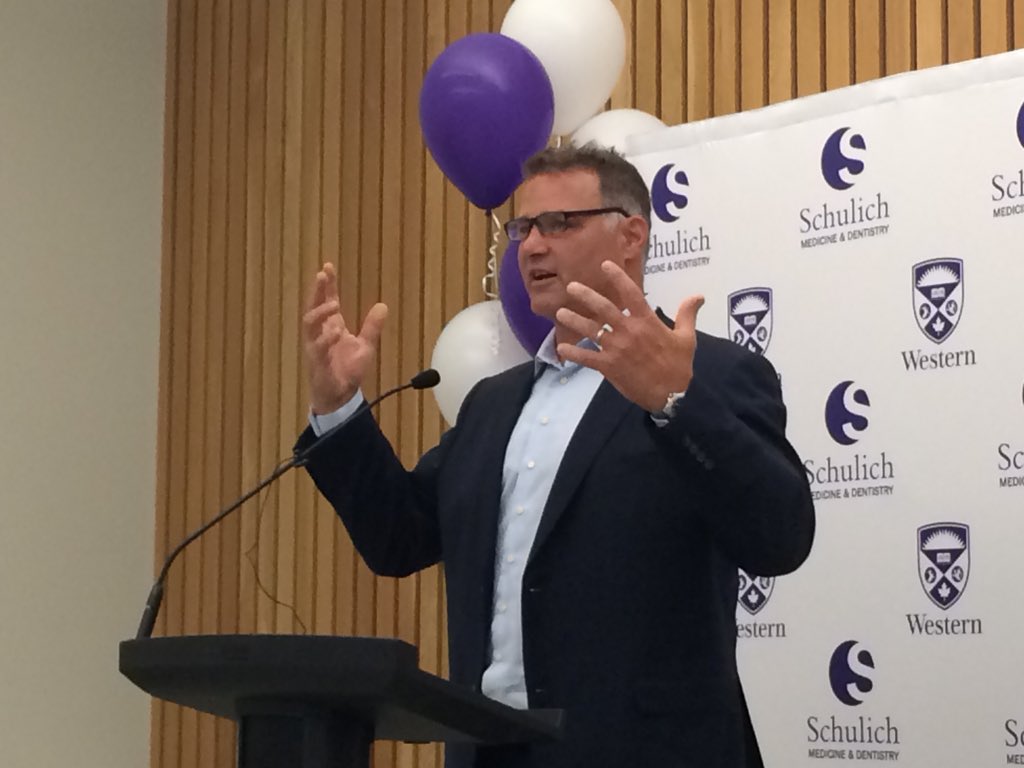Sheldon Geerts was six years old when he had his first concussion.

“I was at recess and I slipped on ice, and I got knocked out. I woke up in the hospital,” said Geerts.
The second one came less than a year later, when the now 11-year-old London-area boy slipped on wet grass, fell down a hill and hit his head. He shared the story Thursday with a crowd of researchers and athletes at Western University, gathered to celebrate achieving a more than $3-million funding goal for concussion research.
For Geerts, the worst part of recovery was how boring it was to sit in a dark room, unable to do much, while his brain repaired itself.
That recovery is one of three stages researchers hope to better understand now that Western University has completed a $3.125-million fundraising challenge set out by the National Hockey League Players’ Association three years ago. The association donated $500,000 and urged the community to come up with the rest.
“The money has come in, the community has stepped up,” said former NHLer Lindros, who is also an honorary chair for See The Line, an initiative dedicated to concussion research, care and awareness.
“Now we look forward, and we pass the baton off to Dr. Arthur Brown and Dr. Greg Dekaban and their teams, and our fingers are crossed for great results,” he added.
- B.C. to ban drug use in all public places in major overhaul of decriminalization
- 3 women diagnosed with HIV after ‘vampire facials’ at unlicensed U.S. spa
- Solar eclipse eye damage: More than 160 cases reported in Ontario, Quebec
- ‘Super lice’ are becoming more resistant to chemical shampoos. What to use instead
See The Line is a 10-year initiative to educate athletes, coaches, parents and the community about the serious impact of concussions. Lindros, whose hockey career was plagued by concussions, still remembers what Brown said during the first event six years ago.
It offered a stark contrast from what he’d heard about his concussions before.
“It was the first time I’d ever heard of anything really positive,” Lindros explained.
“It was always the negative, it was always the ‘this is going to be bad.’ Dr. Brown had something. There was a ray of sunshine.”
Though there’s been a lot of progress in what researchers know about concussions, there’s still more to learn, explained Schulich Medicine and Dentistry Dean Dr. Michael Strong.
“There are really three phases to it,” he explained.
The first phase is what happens immediately after a concussion.
“The second phase is a more indolent, grumbling phase of things, where the brain is trying to repair itself. It might just be a stretching of neurons, a tortional change. How can we help move that forward more efficiently and make it more effective?”
Strong’s lab researches the rare case of chronic traumatic encephalopathy brought on by concussions.
“The brain is actually degenerating at that point. But why? What was about that group of individuals that was unique?”
Those are some of the questions Strong says he and a team of researchers, led by Brown, will be looking into as a result of the funding.
See The Line is in its sixth year, and this is the first time it’s expanded to two days worth of education, including a concussion-focused scientific workshop, a continuing medical education seminar, and a community symposium.
WATCH: How to prevent, recognize, and manage a concussion in children and teens










Comments